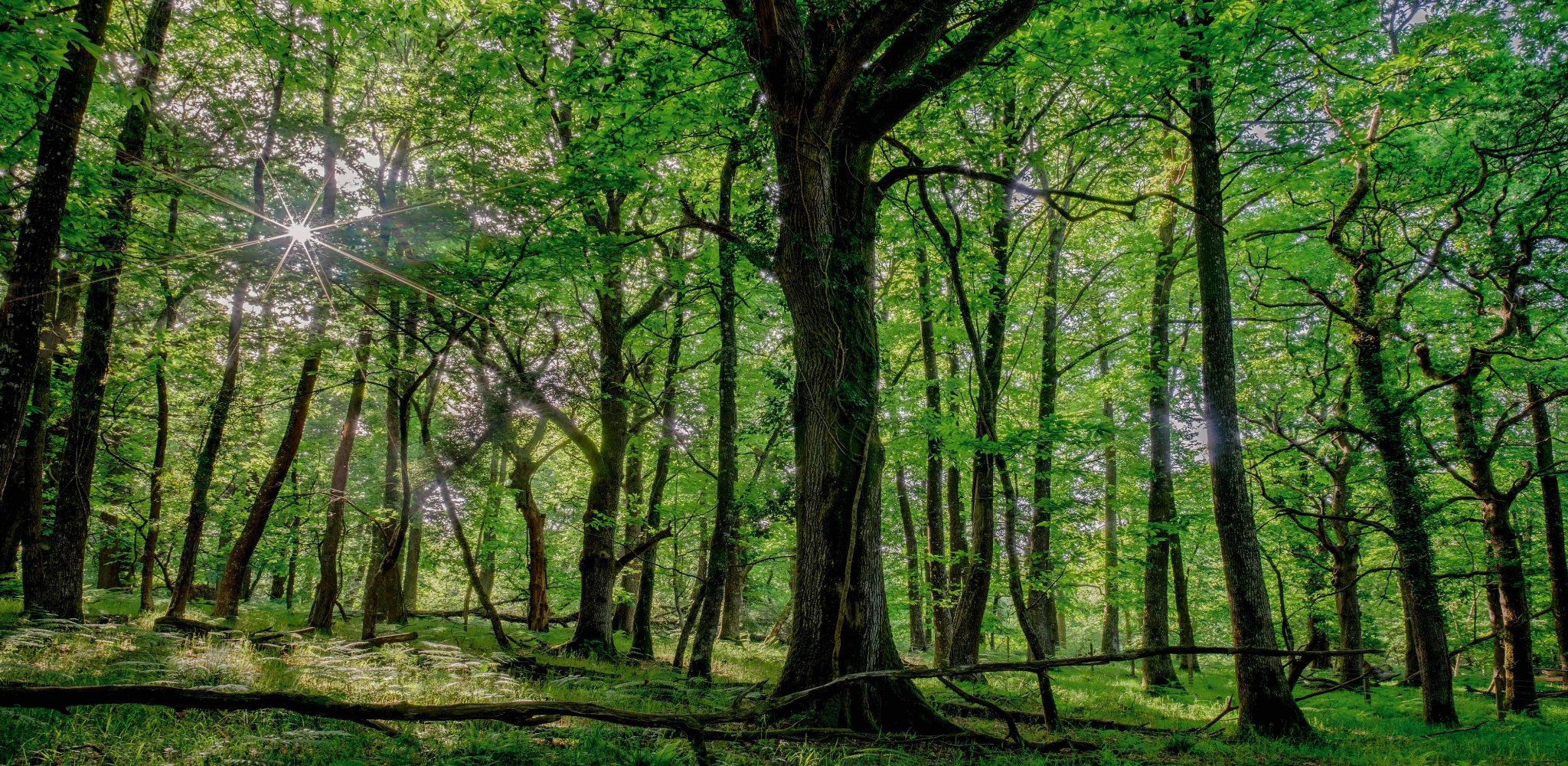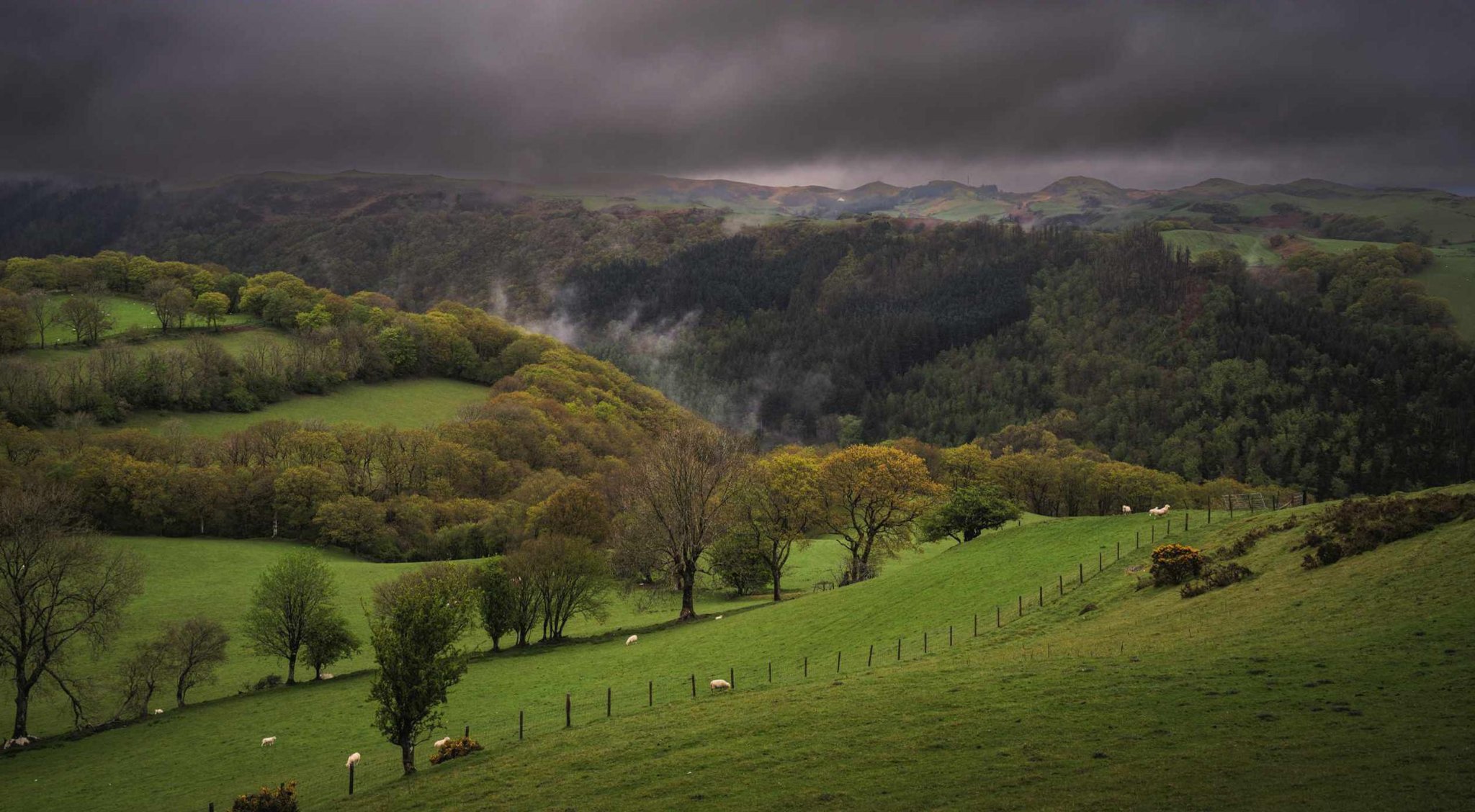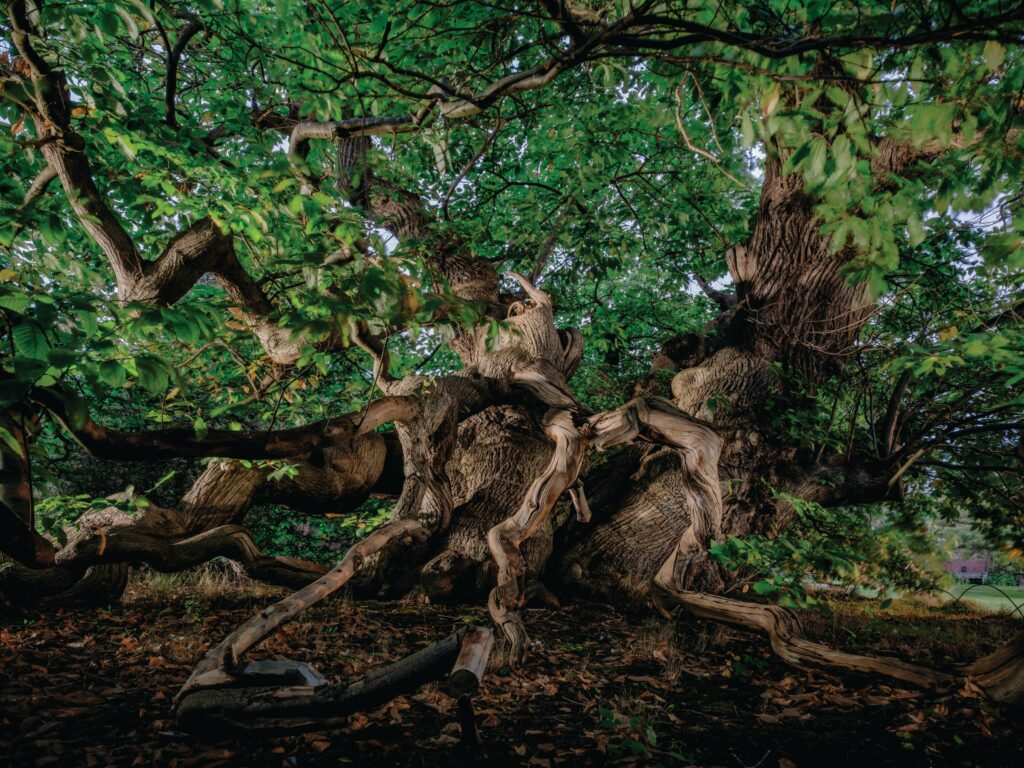VISIT
The Queen’s green legacy
In 2022, tree-planting campaign the Queen’s Green Canopy inspired the country and saw 70 ancient trees dedicated to Her Majesty’s memory. We take a stroll in these history-laden woodlands
Photos: Adrian Houston and Charles Sainsbury-Plaice
What better way to celebrate the late Queen Elizabeth II’s Platinum Jubilee – 70 years of service – than a tree-planting campaign? In 2022, the Queen’s Green Canopy (QGC) invited everyone across the UK to plant trees to create a leafy and life-giving legacy for the Queen’s remarkable reign, with every tree planted bringing benefits for wildlife, people and climate. The Woodland Trust played its part, helping to create a network of 70-acre woods across the UK, containing 500,000 newly planted trees.
As part of the initiative, 70 ancient woodlands and 70 ancient trees were also dedicated to the late Queen, to highlight their conservation and the vital part that woodlands, and the ecosystems they support, have played in British history. You can visit these remarkable veteran trees – from Windsor Great Park to Achaphabuil in the Highlands – in the photography-led book The Queen’s Green Canopy (Ebury Press). With images by Adrian Houston and Charles Sainsbury-Plaice, an introduction by His Majesty the King and contributions from Dame Judi Dench, Countryfile presenter Adam Henson and QGC ambassadors, the book celebrates these long-lived woods in all their beauty. Here is a selection of stunning photos from its pages.
QUEEN ELIZABETH I OAK
Sessile oak (Quercus petraea)
Cowdray Park, West Sussex

Queen Elizabeth I rested here. She may have slept. The estate records of Cowdray Park indicate that, during a royal hunting trip in 1591, a meal and respite were taken under the already substantial oak tree. It is now one of the largest and very oldest sessile oaks in the UK; some estimates put its age at 1,000 years. The 12-metre girth makes the Queen Elizabeth I Oak the second-thickest tree of its kind in Europe.
LANGLEY WOOD NATIONAL NATURE RESERVE
Salisbury, Wiltshire

Langley Wood is a National Nature Reserve of international importance for its variety of wildlife and potential links to the most famous of all British naval vessels. In this extensive ancient broadleaved woodland, at the northern tip of the New Forest National Park, the variety of trees includes pedunculate and sessile oak, alder and small-leaved lime. For centuries, the wood was a mix of periodically grazed coppices and a permanently grazed ‘out wood’. One mighty oak taken from here in 1758 was so massive that it was destined for shipbuilding. It went into one of the 12 naval ships built that year, which included the Victory, on which Nelson commanded the Battle of Trafalgar.
COED RHEIDOL
Cwm Rheidol, Ceredigion Coed

Rheidol, about 11 miles east of Aberystwyth, is a magnificent stretch of ancient sessile oak woodland hanging precariously on the deep sides of the Afon Rheidol gorge. The microclimate at the foot of the narrow gorge contributes to high humidity and thus an abundance of mosses, liverworts, lichens and ferns.
GLEN AFFRIC
South of Loch Beinn, Highland

Glen Affric contains the third largest area of ancient Caledonian pinewoods in Scotland, as well as lochs, moorland and mountains. The 30-mile stretch of the glen’s wooded areas contains mostly Scots pine, but also broadleaved species, such as birch, rowan, aspen, willow and alder. Walkers among the pines are accompanied by the calls of woodland birds, or beside the loch they may see ospreys, otters or red-throated divers.
DODDINGTON SWEET CHESTNUT
Sweet chestnut (Castanea sativa) Doddington Hall, Lincoln, Lincolnshire

The deciduous sweet chestnut was introduced to Britain by the Romans for its edible nuts and widely planted for its timber. It now behaves like a native tree, particularly in south-eastern England. Three 400-year-old trees stand at Doddington Hall; they still produce a substantial annual crop of nuts within their characteristic spiny outer cases.
WOODLAND PHOTOGRAPHY TIPS
from photographer Adrian Houston
1 Take your time
When photographing a celebrity, you have very little time to make a connection with them in order to get the best shot, but you can spend as much time as you like with a tree. For me, making a connection is the same with a tree; I need to visit it in order to understand it and spend some time working out the best time of day to shoot. Once you understand your subject, you’ll be able to capture its best moment.
2 Observe the light
The best sort of light for shooting a tree or woodland is a cloudy day when the light is flat. An individual tree takes on many forms as the light moves across it during the day, so wait until the light flatters the tree the most; the more patience you have, the better the result. Inspire people to look at trees in a different way by photographing through an atmospheric early morning mist when the sun is low in the sky, or at sunset, or on a dull grey day to bring out the woods’ mystical charm. Shooting after heavy rain also accentuates the woodland’s colours.
3 Use a tripod
Depending on the thickness of the canopy, the light can be very low in woodlands, so using a tripod will allow you to spend more time composing your picture. Look for distinctive trees, and gaps in the canopy that will give you more light. A wide-angle lens is essential to help you capture the full size of large spreading trees.

The Queen’s Green Canopy with photography by Adrian Houston and Charles Sainsbury-Plaice is published by Ebury Press, £40